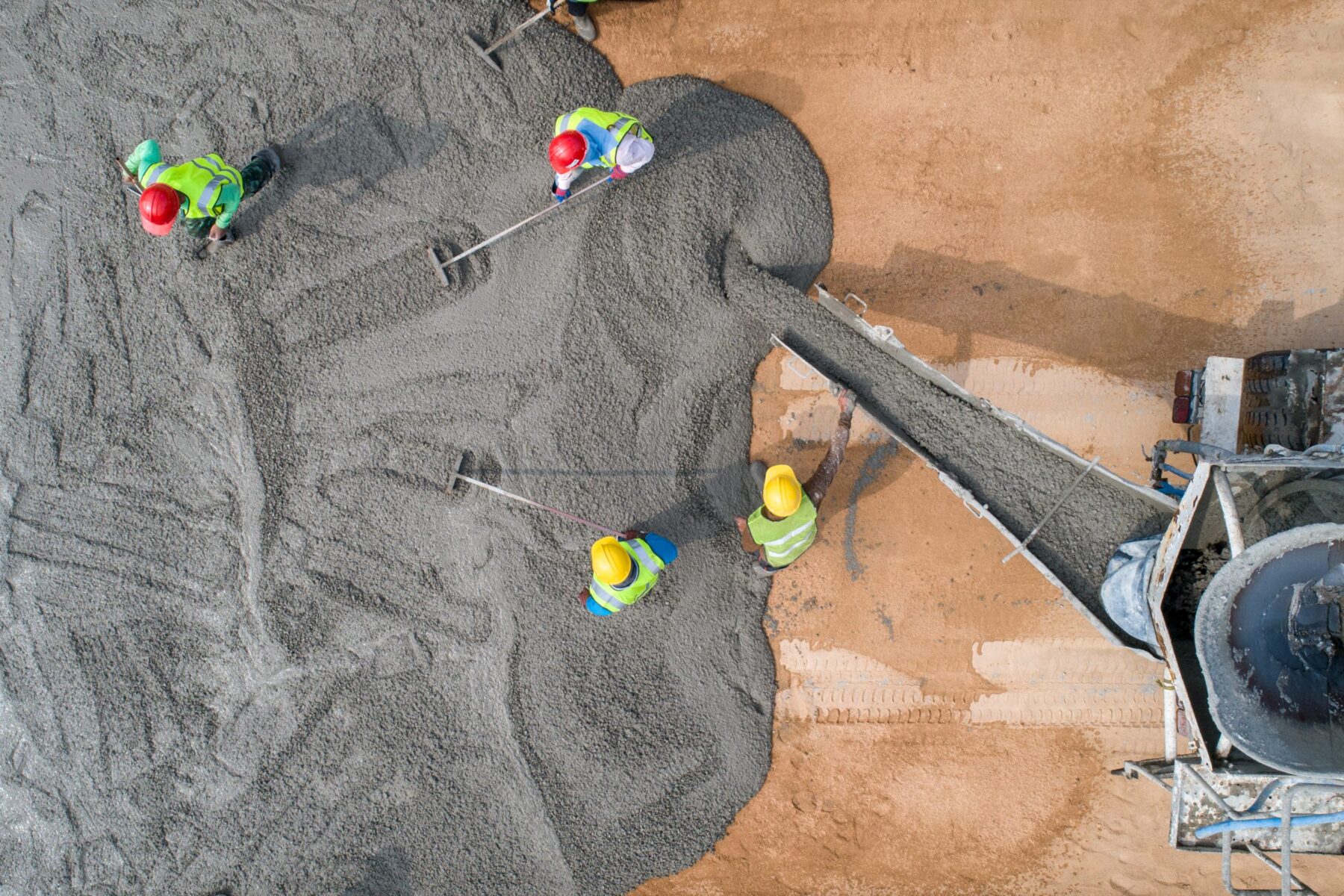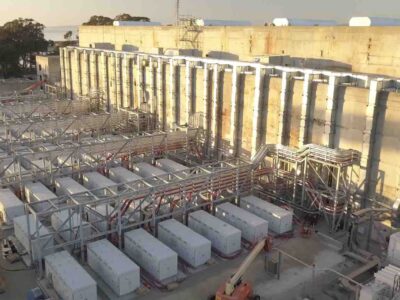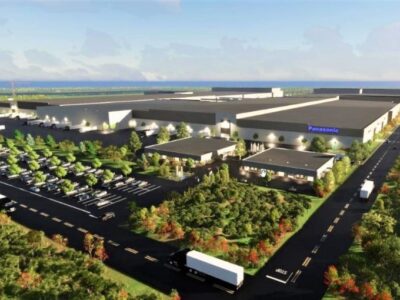The environmental impact of the construction industry often focuses on clearing land for development, but materials used in construction also have a significant impact. Cement manufacturing accounts for 8% of global carbon dioxide emissions, according to a 2022 report from Inside Climate News. That’s nearly triple the emissions from the aviation industry.
Cement manufacturers have roughly doubled their CO2 emissions over the past decades. The cement industry must reduce its yearly emissions by at least 16% by 2030 to meet the Paris Climate Agreement standards.
One way to do that is to produce alternatives to traditional cement with lower emissions. Plenty of work is being done in this area. Among the recent projects is at an industrial lot in Flagstaff, Arizona, where a public-private partnership aims to remove CO2 during concrete production.
The partnership, announced in March, includes three companies: Block-Lite, a Flagstaff-based masonry business; CarbonBuilt, a Torrance, California-based low-carbon concrete technology firm; and Aircapture, a Berkeley, California-based developer of direct-air-capture (DAC) and carbon-to-product solutions.
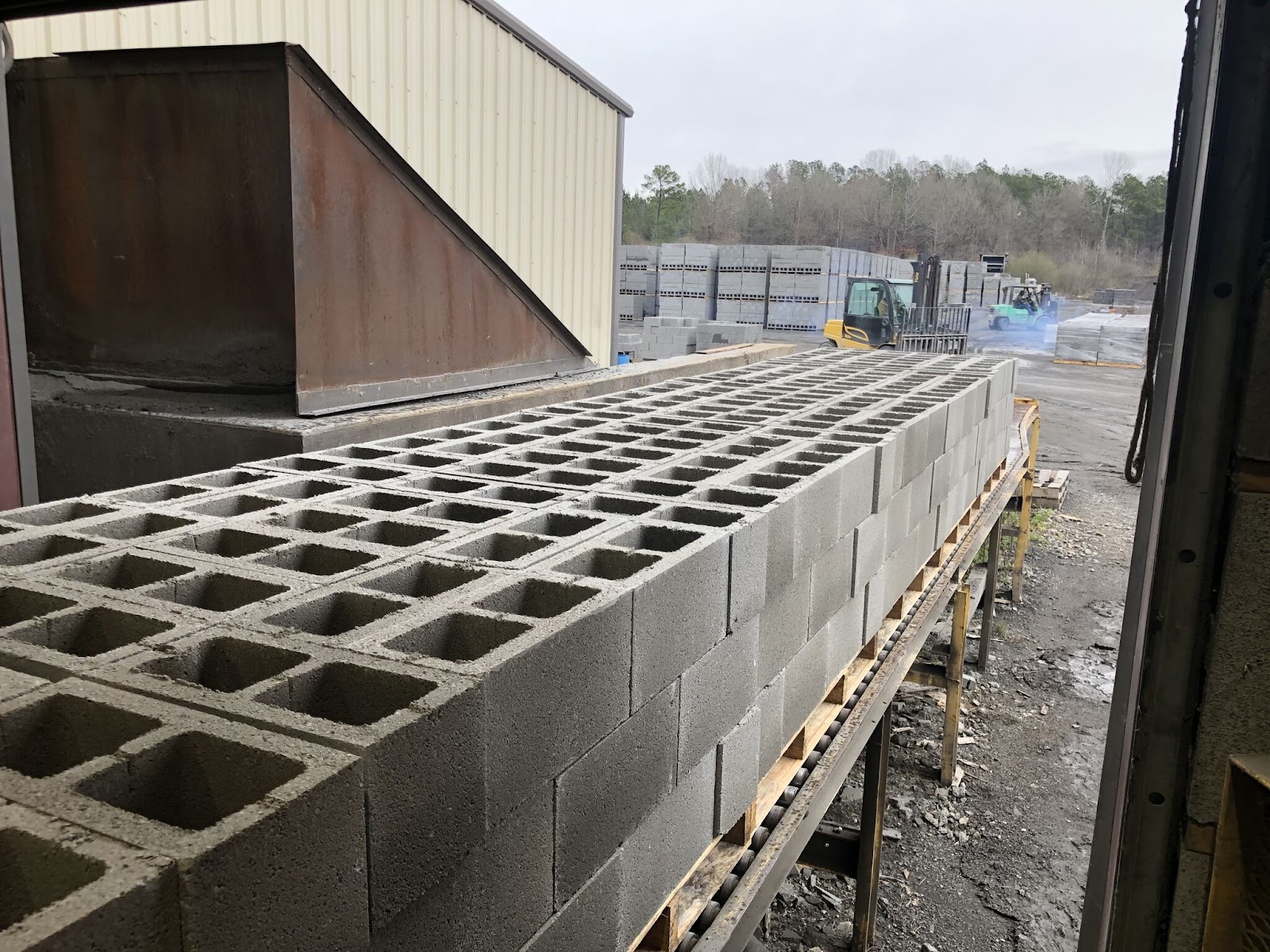
Photo Courtesy CarbonBuilt
The trio of partners is backed by a $150,000 grant from the 4 Corners Carbon Coalition, a network of local governments in Arizona, Colorado, New Mexico, and Utah that puts together community-anchored carbon-removal projects.
In a March 23 press release, CarbonBuilt billed the Flagstaff project as “the world’s first on-site, fully-integrated” DAC-to-concrete commercial production facility. Under the partnership agreement, the companies will retrofit one of Block-Lite’s plants to lower its emissions drastically.
Initially, the facility will produce 30,000 metric tons of concrete per year while removing roughly 500 tons of atmospheric CO2 a year, Canary Media reported. Overall emissions from concrete-making are expected to fall by more than 70% compared to traditional concrete. Production at the plant is set to begin in 2024.
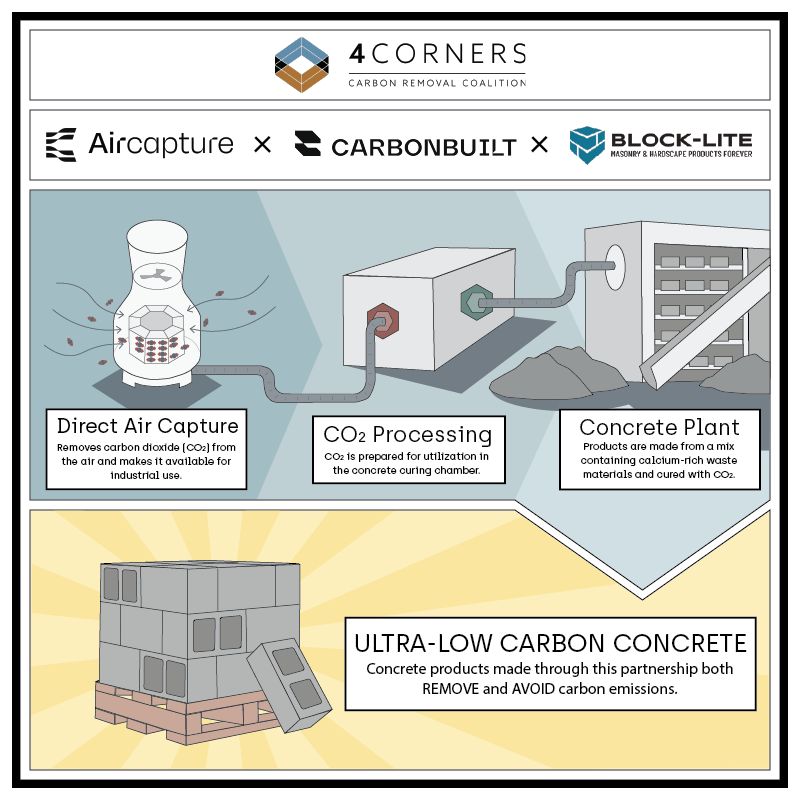
Photo Courtesy Aircapture
“We intend for this project to become a blueprint that can be replicated at many of the thousands of concrete manufacturing plants around the world,”
CarbonBuilt CEO Rahul Shendure said. “The grant from Four Corners is a key first step in the overall project plan, and we look forward to building on the momentum with our partners.”
CarbonBuilt will install its technology at the Block-Lite site, enabling Block-Lite to reduce the use of cement in concrete products by replacing traditional cement with a proprietary mix of low-cost and low-carbon industrial waste materials that are sourced locally. The technology then uses CO2 to harden the mixture into concrete blocks.
Aircapture’s modular DAC technology will supply Block-Lite with clean carbon dioxide captured from air on-site. To make this happen, Aircapture will build an array of DAC units designed to capture about 100 metric tonnes of CO2 per year. The CO2 will then be routed into CarbonBuilt’s gas processing system to be conditioned before being mineralized and stored permanently as concrete.
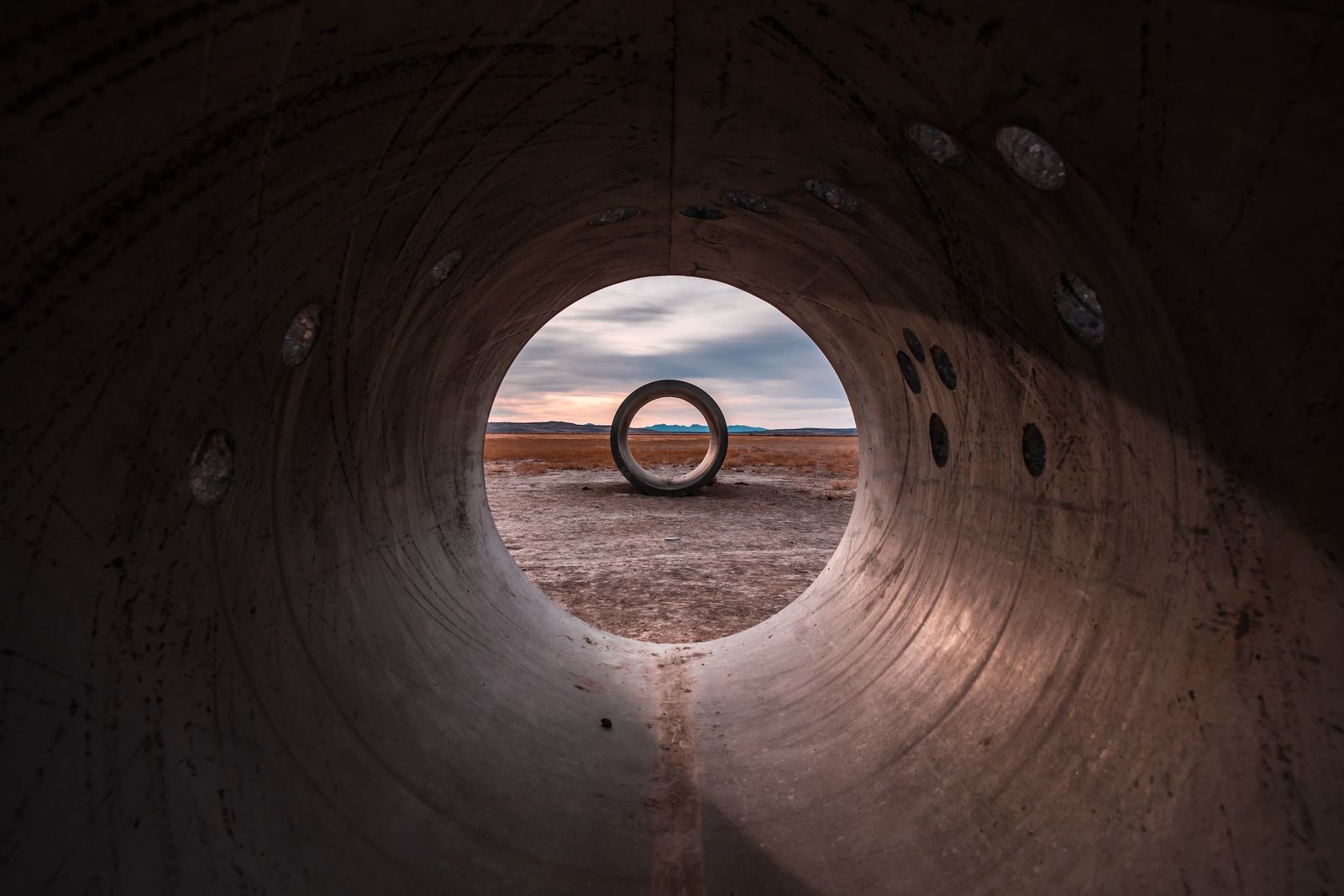
Photo Courtesy Aircapture
The project is expected to help Block-Lite avoid 2,000-3,000 tonnes of carbon-dioxide emissions a year and remove more than 500 tonnes of atmospheric CO2 per year for each production line.
“All too often, sustainable building materials require a trade-off between cost and performance, but what is unique about this project is that there’s no ‘green premium,’” Block-Lite said in a company statement.
“We’re going to be able to produce on-spec, ultra-low carbon blocks at price parity with traditional block, which should speed adoption and impact.”
The project advances DAC technology in a number of different ways. For example, atmospheric carbon will not just be buried but also treated as an ingredient in a high-volume commercial product. In addition, the impact of transporting CO2 will be much lower because the integration is done on-site. The on-site element also means there is zero land-use impact because the project doesn’t require building a new facility on new land.

